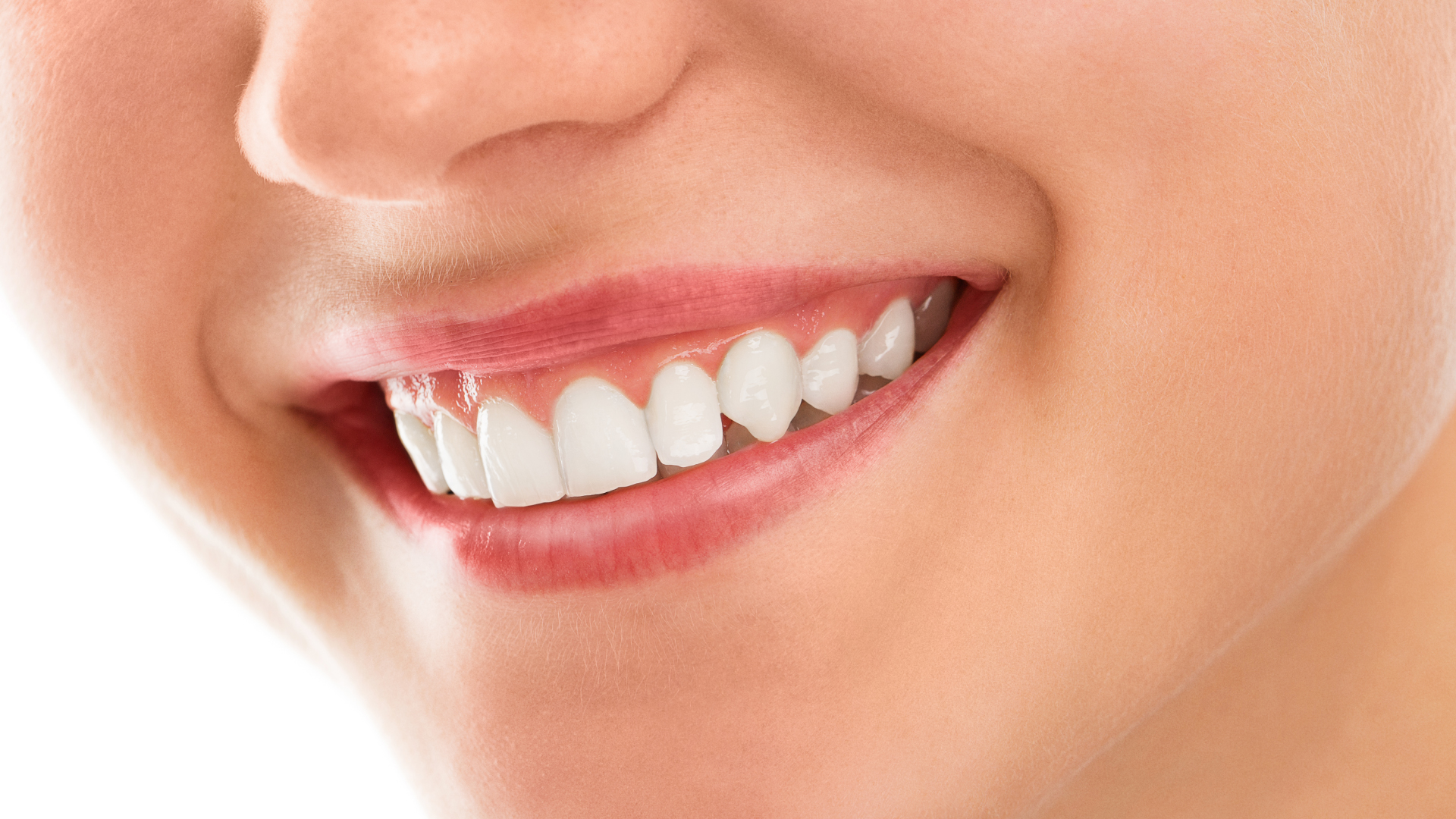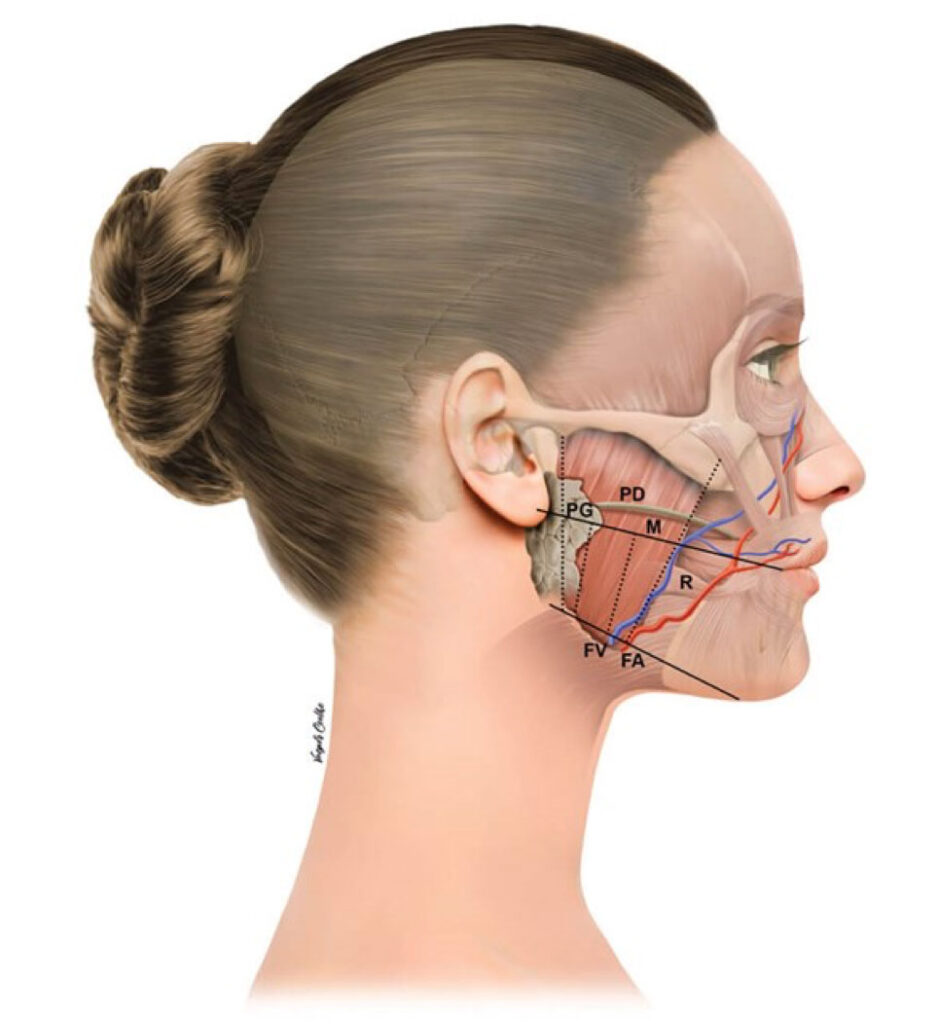1. Standring S (Ed.). Grayʼs anatomy: the anatomical basis of clinical practice. USA; Elsevier; 2015.
2. Berkovitz B, Kirsch C, Moxham BJ, et al. Interactive Head and Neck. Primal Pictures Ltd; 2003.
3. von Lindern JJ, Niederhagen B, Appel T, et al. Type A Botulinum Toxin for the Treatment of Hypertrophy of the Masseter and Temporal Muscles: An Alternative Treatment. Plast Reconstr Surg 2001;107(2):327-32.
4. Harriman DG.The histochemistry of reactive masticatory muscle hypertrophy. Muscle & Nerve 1996;19(11):1447-56.
5. Wu WT. Botox facial slimming/facial sculpting: the role of botulinum toxin-A in the treatment of hypertrophic masseteric muscle and parotid enlargement to narrow the lower facial width. Facial Plast Surg Clin North Am 2010;18(1):133-40.
6. Kebede B, Megersa S. Idiopathic masseter muscle hypertrophy. Ethiop J Health Sci 2011;21(3):209-12.
7. Baek SM, Baek RM, Shin MS. Refinement in aesthetic contouring of the prominent mandibular angle. Aesthetic Plast Surg 1994;18(3):283-9.
8. Beckers HL. Masseteric muscle hypertrophy and its intraoral surgical correction. Journal of Maxillofacial Surgery 1977;5:28-35.
9. Lobbezoo F, Ahlberg J, Glaros AG, et al. Bruxism defined and graded: an international consensus. J Oral Rehabil 2013;40:2-4.
10. Lobbezoo F, Ahlberg J, Raphael KG, et al. International consensus on the assessment of bruxism: Report of a work in progress. J Oral Rehabil 2018;45(11):837-44.
11. Ella B, Ghorayeb I, Burbaud P, et al. Bruxism in movement disorders: a comprehensive review. Journal of Prosthodontics 2017;26:599-605.
12. Carra MC, Huynh N, Lavigne GJ. Sleep bruxism: a comprehensive overview for the dental clinician interested in sleep medicine. Dent Clin N Am 2012;56:387-413.
13. Lavigne GJ, Rompré PH, Poirier G, et al. Rhythmic masticatory muscle activity during sleep in humans. J Dent Res 2001;80(2):443-8.
14. Lavigne GJ, Montplaisir JY. Restless legs syndrome and sleep bruxism: prevalence and association among Canadians. Sleep 1994;17(8):739-43.
15. Huynh N, Kato T, Rompré PH, et al. Sleep bruxism is associated to micro-arousals and an increase in cardiac sympathetic activity. J Sleep Res 2006;15:339-46.
16. Lavigne GJ, Khoury S, Abe S, et al. Bruxism physiology and pathology: an overview for clinicians. J Oral Rehabil 2008;35(7):476-94.
17. Seligman DA, Pullinger AG. The prevalence of dental attrition and its association with factors of age, gender, occlusion and TMJ symptomatology. J Dent Res 1988;67:1323-33.
18. Smith BG, Knight JK. A comparison of patterns of tooth wear with aetiological factors. Br Dent J 1984;157:16-9.
19. Tsukiyama Y, Baba K, Clark GT. An evidence-bases assessment of occlusal adjustment as a treatment for temporomandibular disorders. J Prosthet Dent 2001;86:57-66.
20. Ommerborn MA, Schneider C, Giraki M, et al. Effects of an occlusal splint compared with cognitive-behavioral treatment on sleep bruxism activity. Eur J Oral Sci 2007;115(1):7-14.
21. Tan EK, Jankovic J. Treating severe bruxism with botulinum toxin. JADA 2000;131:211-6.
22. Moore AP, Wood GD. The medical management of masseteric hypertrophy with botulinum toxin type A. Br J Oral Maxillofac Surg 1994;32:26-8.
23. To EW, Ahuja AT, Ho WS, et al. A prospective study of the effect of botulinum toxin A on masseteric muscle hypertrophy with ultrasonographic and electromyographic measurement. Br J Plast Surg 2001;54:197-200.
24. Peng H-LP, Peng J-H. Complications of botulinum toxin injection for masseter hypertrophy: Incidence rate from 2036 treatments and summary of causes and preventions. J Cosmet Dermatol 2018;17:33-8.
25. Lee CJ, Kim SG, Kim YJ, et al. Electrophysiology change and facial contour following botulinum toxin a injections in square faces. Plast Reconstr Surg 2007;120:769-78.
26. Kim HJ, Yum KW, Lee SS, et al. Effects of botulinum toxin type a on bilateral masseteric hypertrophy evaluated with computed tomographic measurement. Dermatol Surg 2003;29:484.
27. Yu CC, Chem P, Chen YR. Botulinum toxin a for lower facial contouring: a prospective study. Aesth Plast Surg 2007;31:445-51.
28. Carruthers A, Carruthers J. Botulinum Toxin. In: Dover J (Ed.). Procedures in Cosmetic Dermatology USA; Elsevier; 2013.
29. Almukhtar RM, Fabi SG. The masseter muscle and its role in facial contouring, aging, and quality of life: a literature review. Plast Reconstr Surg 2019;143(1):39e-48e.
30. Ahn BK, Kim YS, Kim HJ, et al. Consensus recommendations on the aesthetic usage of botulinum toxin type A in Asians. Dermatol Surg 2013;39(12):1843-60.
31. Hu KS, Kim ST, Hur MS, et al. Topography of the masseter muscle in relation to treatment with botulinum toxin type A. Oral Surg Oral Med Oral Pathol Oral Radiol Endod 2010;110:167-71.
32. Kim DH, Hong HS, Won SY, et al. Intramuscular nerve distribution of the masseter muscle as a basis for botulinum toxin injection. J Craniofac Surg 2010;21(2):588-91.
33. Kaya B, Apaydin N, Loukas M, et al. The topographic anatomy of the masseteric nerve: a cadaveric study with an emphasis on the effective zone of botulinum toxin A injections in masseter. JPRAS 2014;64:1663-8.
34. Shim YJ, Lee HJ, Park KJ, et al. Botulinum toxin therapy for managing sleep bruxism: a randomized and placebo-controlled trial. Toxins (Basel) 2020;12(3):168.








